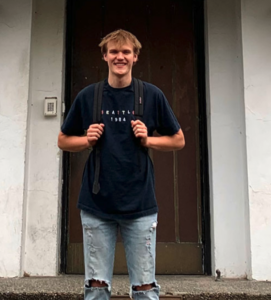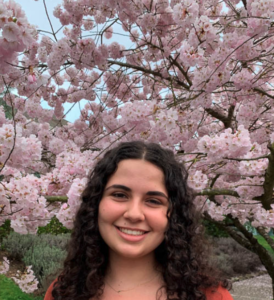CBE and the University of Washington have been working with Westport and their neighbors to help them face the threat of tsunamis head-on. | The Seattle Times
Category: Urban Design & Planning
Connecting the coastline
How the UW is helping Westport prepare for a tsunami | UW For Washington
[Re]Visioning the Ave: Students devise real-world strategies for a thriving, accessible neighborhood hub
For several years, the U-District Partnership has sought to figure out what kinds of investments and interventions might help bring optimism back to the Ave. In this effort, UDP reached out to the College of Built Environments for assistance. Might there be a chance to get CBE students involved in devising some solutions?
Building a more just and beautiful future: CBE’s new faculty cohort makes strides on campus
The College of Built Environments at the University of Washington has big dreams. Faculty, staff, and students are tackling issues of social and environmental justice and climate change. They’re seeking out innovations in sustainability, breaking out of disciplinary silos, and forging new collaborations
Youth Perspectives on Disaster Planning project wins Population Health Initiative grant
Among the awarded projects was “Incorporating Youth Perspectives to Improve Disaster Planning: Piloting Drone-Based Photovoice to Explore Cultural Assets” whose investigators include UDP Associate Professor Daniel Abramson and UDP Masters’ student Matias Korfmacher, in collaboration with researchers from DEOHS.
CBE awardees of climate focused Population Health Initiative grants
CBE was well represented across the grant recipients of the Population Health Initiative, with four of the twelve projects including input from researchers in Architecture, Landscape Architecture, Urban Design and Planning, Real Estate, and Construction Management.
CBE Community, Environment, and Planning alum encounters experiences of a lifetime during his undergraduate career
Elijah Mason stepped through the door of his second-ever UW College of Built Environments (CBE) class. He was nervous, but also excited. “I chose the course because it was a planning practicum,” explains Mason. “We were going to be doing real work for the community, not just handing in assignments.”
UW, Pacific County EDC launch housing partnership
UW’s Livable City Year and program and the Pacific County Economic Development Council are working together to tackle important housing planning issues. | Chinook Observer
Q&A: Exploring how the design of the built environment affects our health and well-being
The recently published second edition of “Making Healthy Places: Designing and Building for Well-being, Equity, and Sustainability” explores how the design of houses, schools, workplaces, streets, parks, transportation systems, and urban form, affect our health and well-being.
New faculty books: How your brain works, cycling around the world and more
H. Pike Oliver, affiliate instructor of real estate at UW, and co-author Michael Stockstill new book, “Transforming the Irvine Ranch: Joan Irvine, William Pereira, Ray Watson and The Big Plan”, talks about the history of the University of California campus and its impact on the development of the city.
Visiting Scholar: Chung Ho Kim
As a visiting scholar in the Department of Urban Design and Planning, Chung Ho Kim has three goals: reconnect, research, and refresh.
College of Built Environments’ unique Inspire Fund aims to foster research momentum in underfunded pursuits college-wide. And it’s working.
In January 2021, the College of Built Environments launched its new Inspire Fund to “inspire” CBE research activities that are often underfunded, but for which a relatively small amount of support can be transformative. The fund aims to support research where arts and humanities disciplines are centered, and community partners are engaged in substantive ways.
Beloved Communities: College of Built Environments students help historically Black churches survive gentrification
UW CBE students and faculty collaborated with the Nehemiah Initiative to help institutions in historically Black communities like churches and the people they serve survive rapid socioeconomic change. | UW Magazine
Two CBE students named to 2022 Husky 100
The University of Washington recognized two students from the College of Built Environments for the 2022 Husky 100. Congratulations to Talia Kertsman and Andrew Hengstler!
Talia Kertsman, Community, Environment, and Planning major
“I came to the UW seeking a depth of understanding around questions keeping me up at night – questions about the future of cities and how to sustain belonging in all spaces. I’m grateful to have had the opportunity to grow in Seattle and learn from those working to preserve spaces of cultural value. I hope to work at the intersection of equitable community development and education, thinking about how students and educators can co-create spaces of learning, inside and outside the classroom.”
Andrew Hengstler, Construction Management major
 “Strong communities promote positive progress. I have focused my years at the UW working to foster this sense of community, empowering others to rally and grow together. Within my career, I seek to develop built environments that encourage community collaboration, where people are not separated by class or culture. By creating environmentally and socially sustainable habitats, we can both protect nature and preserve our vital sense of community.”
“Strong communities promote positive progress. I have focused my years at the UW working to foster this sense of community, empowering others to rally and grow together. Within my career, I seek to develop built environments that encourage community collaboration, where people are not separated by class or culture. By creating environmentally and socially sustainable habitats, we can both protect nature and preserve our vital sense of community.”
The Husky 100 recognizes 100 UW undergraduate and graduate students who are making the most of their time at the UW. Those named include undergraduates and graduate students who have founded start-ups, conducted research, and advocated for social justice.
CBE welcomes new cohort of faculty
We are excited to announce the first wave of CBE’s new faculty cohort! Each brings new strengths and perspectives and as a group, they have the potential to be an effective team who, together with the excellent faculty already at CBE, will accelerate the positive impact of our teaching, research, and engagement.
Disaster Management Cooperation in South Asia
Assistant Professor in the University of Washington’s Department of Urban Design and Planning Himanshu Grover argues that given the inherent challenges in regional cooperation in South Asia, it is worth exploring what an effective regional disaster response and risk reduction network architecture looks like. | NBR
Urbanization is driving evolution of plants globally, study finds
Humans re-shape the environments where they live, with cities being among the most profoundly transformed environments on Earth. New research now shows that these urban environments are altering the way life evolves. Marina Alberti, professor of urban design and planning, and the Urban Ecology Research Lab’s research is highlighted. | UW News
